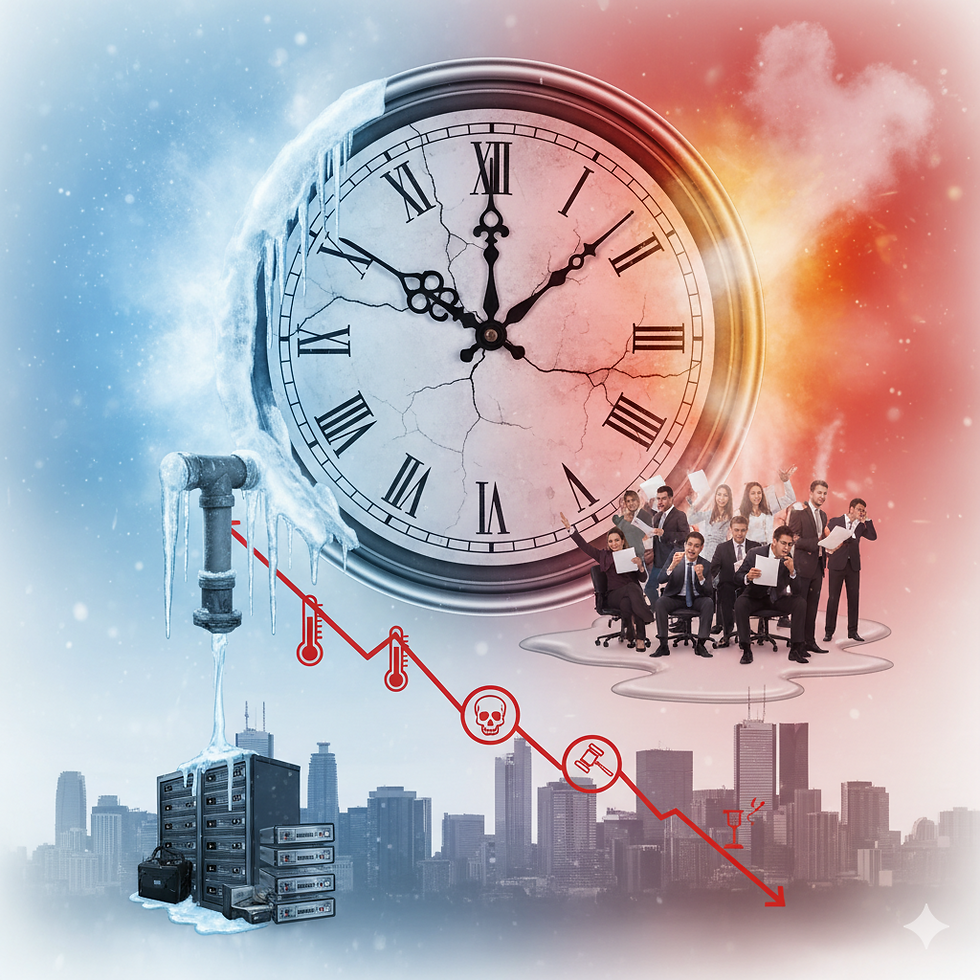Retrofit vs. Replacement: Making the Right HVAC Decision for Your Business
- martinbliss9
- Jun 3, 2024
- 4 min read

Your HVAC system has a significant impact on many aspects of the day-to-day operation of your commercial building, from providing a comfortable and productive environment for your employees and clients to ensuring you achieve high efficiency and optimization.
As systems age, a dilemma emerges for building owners and managers: should they retrofit or replace their HVAC system?
At Burban Air Systems Ltd., we understand that choosing the right path is not always easy, especially since both retrofitting and replacing have their advantages and disadvantages. Here, we deliver some valuable information on some of the key criteria to consider when you’re contemplating retrofitting or replacing your HVAC system.
Understanding Retrofit vs. Replacement
Retrofit: Enhancing Existing Systems
Retrofit, entails updating or modifying components of your existing HVAC system to boost its performance, efficiency and longevity. It’s almost always less expensive (and less disruptive) than replacement. These are among the most common retrofit measures:
Install Better Controls: Installing high-end control systems can help optimize HVAC operation, reduce energy use and improve comfort.
Use Variable Speed Drives: Installing variable speed drives on induction motors and fan systems can cut energy usage by 15-40 percent.
Install Premium Efficiency Motors: Replace old motors with new premium efficiency motors.
Replacing Old Parts: Exchanging a compressor, coil, or heat exchanger for a modern, high-efficiency replacement part may be just the ticket for a failing system.
Seal and insulate ducts: Detect leaks and repair or replace ductwork.
Tune-up: Service central air conditioning equipment to maintain performance.
Replace central air-conditioner: Install an efficient model using ENERGY STAR-certified equipment and apply Best Practices.
External shading: Add awnings in North-facing windows or plant trees for shade.
Set programmable thermostat: Set thermostat to energy-saving mode, or higher at night and when you are away.
Insulate: Thermal insulation of uninsulated water pipes in hot weather, uninsulated attic or roof in hot climates, or uninsulated walls in hot climates.
Repair refrigerator: Service inefficient, refrigeration appliance.
Insulate water pipes: Insulate all accessible hot water pipes, either individually or with blanket.
Replace refrigerator: Remove and replace inefficient, refrigeration appliance with an ENERGY STAR appliance or other cost-effective model.
Upgrade insulation and ducts: Maintain optimal insulation levels and repair or upgrade ducts. The heat island effect, caused by city temperatures being higher than surrounding areas and the high levels of pollution resulting from road exhaust fumes in urban areas, is a factor.
Replacement: Investing in a New System
Replacement is the removal of the old HVAC system, following which, a brand new HVAC system is installed. Although replacement typically calls for bigger upfront spending and more installation work, it offers some strong benefits – such as:
Improved Efficiency: New HVAC systems are built to modern efficiency standards and, therefore, contribute towards lower energy bills and a lower carbon footprint.
Enhanced Reliability: Contemporary systems are less likely to break down. Modern systems may even have warranties that make them more dependable and lower maintenance costs.
State-of-the-art Technology: Modern systems can include smart thermostats, zoning systems, and advanced air filtration which can improve comfort and air quality.
Long-term savings: The initial price outlay is greater but, in the long run, reduced energy usage, lower maintenance costs and possible tax credits or incentives can mean that replacement is actually a worthwhile investment.
Factors to Consider
When deciding between retrofitting and replacing your HVAC system, consider the following factors:
1. System Age and Condition
How old is your current HVAC system? Systems more than 10-15 years old might also be a candidate for replacement due to obsolescence. Then again, if your equipment is relatively new but you’ve had some problems, a retrofit could be the most cost-effective approach.
2. Budget and Financial Considerations
Evaluate your HVAC expense allowance. Retrofits might cost less to do; this makes them more feasible for those with lower capex budgets. On the other hand, the ongoing savings potential of a replacement might make it a better option regardless of its higher initial price tag.
3. Energy Efficiency Goals
Replacing your HVAC system with a more energy-efficient one is your best strategy if you want your business to have the greatest level of improved energy efficiency; but genuinely effective efficiency-focused targeted retrofitting can help you save nearly as much in energy costs – provided your current system isn’t completely outdated.
4. Disruption to Operations
Think about the potential disruption to your business activity. Retrofitting is likely to mean less downtime, fewer disruptions to operations than carrying out a full replacement. If disruption is key, retrofit might be the way forward.
5. Future Expansion Plans
And if you anticipate new spaces in the building in the future, an HVAC replacement system can be tailored to this layout. Retrofit might be trickier with more significant reconfigurations in mind.
Conclusion
Retrofitting or replacement. It’s a decision that should be carefully considered. At Burban Air Systems Ltd. we take the mystery out of the process. Give us a call today and speak with one of our comfort advisors to get started with a quote for retrofitting your most used system or replacing your existing system for a more efficient and comfortable commercial space moving forward.
Need help to select the best HVAC solution for you? Burban Air Systems Ltd provides professional heating and cooling services.







